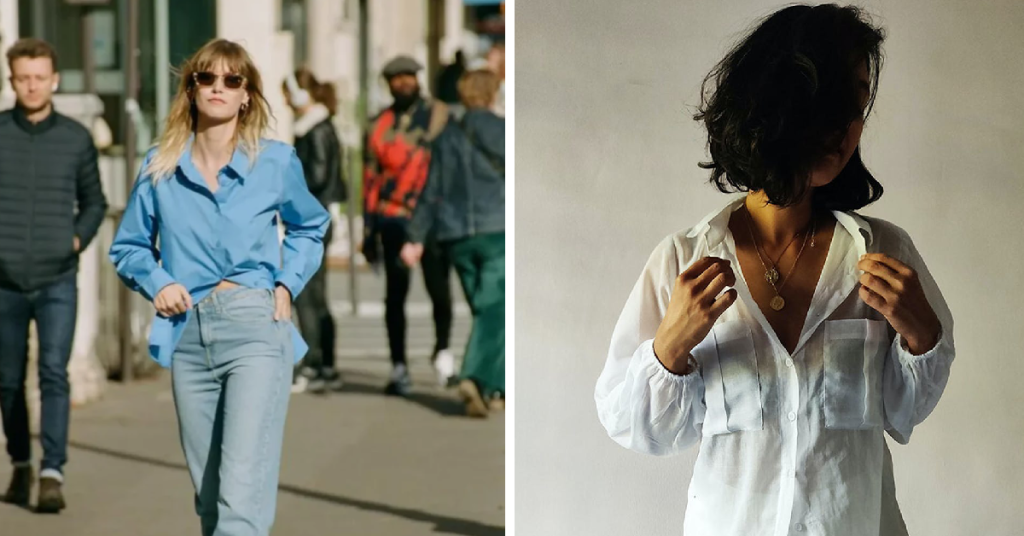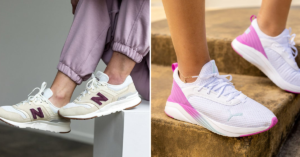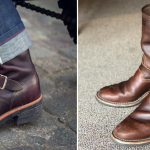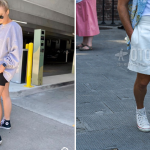Sustainable fashion is all about being mindful of the impact our clothing choices have on the planet and people. It involves considering the entire lifecycle of a garment, from sourcing materials and production processes to how we care for and dispose of our clothes. By opting for sustainable fashion, you’re supporting ethical practices that prioritize the well-being of both the environment and the workers behind the scenes.

When it comes to sustainable fashion, key factors to look out for include eco-friendly materials like organic cotton, hemp, and Tencel, as well as production processes that minimize waste and reduce carbon emissions. Brands that prioritize transparency and fair labor practices are also instrumental in upholding sustainable principles within the fashion industry. By making conscious choices and supporting these initiatives, you’re contributing to a more sustainable and ethical future for the fashion world.
What is Fast Fashion?
Fast fashion refers to the rapid production of inexpensive, trendy clothing that mimics the latest runway styles. Brands under the fast fashion umbrella prioritize mass-producing garments quickly and affordably, leading to a high turnover rate of new designs hitting stores almost weekly. This approach allows consumers to keep up with ever-changing fashion trends without breaking the bank, but it also comes at a cost.
The relentless pace of fast fashion means that garments are often made using cheaper materials and produced under questionable ethical practices. This leads to issues like poor working conditions for factory workers, low wages, and an overall lack of regard for environmental sustainability. Fast fashion has revolutionized the way we shop for clothing, but it is essential to consider the impact it has on both people and the planet.
The impact on the environment
The fashion industry, with its fast-paced production cycles and mass consumption, contributes significantly to environmental degradation. The constant demand for new trends and cheap clothing leads to excessive water usage, pollution from chemicals, and massive amounts of textile waste. From the cultivation of raw materials like cotton to the dyeing and finishing processes, each stage of garment production has a substantial ecological footprint.
The rise of “throwaway fashion” culture further exacerbates environmental concerns. The increasing frequency with which people discard clothes after minimal use not only fills up landfills but also increases the production of new garments, perpetuating the cycle of resource depletion and pollution. This linear “take-make-dispose” model is unsustainable in the long run and calls for a shift towards more responsible and eco-friendly practices in the fashion industry.
The Impact on Workers
Workers in the fashion industry often face harsh working conditions, including long hours, low wages, and lack of job security. Many garment workers, especially in developing countries, are subject to exploitation and unsafe working environments. This is because fast fashion brands prioritize profit over the well-being of their workers, leading to a vicious cycle of poverty and inequality.
One of the main challenges faced by workers in the fashion industry is the lack of transparency and accountability within supply chains. This means that many workers are unaware of who they are producing garments for, making it difficult to ensure fair wages and safe working conditions. Additionally, the pressure to meet tight deadlines set by fast fashion brands can lead to increased stress and health issues among workers.
Cost Differences
When it comes to sustainable fashion versus fast fashion, one noticeable difference is the cost. Sustainable fashion pieces might initially seem pricier than their fast fashion counterparts, but remember, quality over quantity! Investing in well-made, ethically produced clothing can actually save you money in the long run. Think of it as a long-term investment in both style and the planet.
On the other hand, fast fashion items often come with a tempting price tag that can be hard to resist. However, these lower costs often reflect the true price paid by the environment and the workers who produce them. It’s important to consider the hidden costs that come with cheap clothing, such as the environmental impact of mass production and the exploitation of labor in the supply chain. Ultimately, paying a bit more for sustainable fashion means you’re contributing to a more equitable and eco-friendly industry.
Quality Differences
When it comes to quality differences in fashion, the contrast between fast fashion and sustainable fashion is quite evident. Fast fashion garments are often made with cheap materials that tend to deteriorate quickly after a few washes. On the other hand, sustainable fashion pieces are crafted with high-quality fabrics that are designed to last longer and withstand the test of time. This means that while you may initially pay a bit more for sustainable fashion, in the long run, you’re actually saving money by not having to constantly replace worn-out items.
Another aspect to consider is the attention to detail in sustainable fashion pieces compared to their fast fashion counterparts. Sustainable fashion brands often prioritize craftsmanship and ensure that each garment is made to perfection. From intricate stitching to carefully chosen embellishments, sustainable fashion items exude a level of quality that is hard to find in fast fashion garments. This focus on detail not only enhances the aesthetics of the clothing but also contributes to their longevity, making them treasured pieces in your wardrobe for years to come.
Consumer Behavior
When it comes to sustainable fashion, consumer behavior plays a crucial role in driving change. Many shoppers are becoming more conscious of their purchasing decisions and are seeking out brands that align with their values. From opting for brands that prioritize ethical practices to choosing products made from eco-friendly materials, consumers are increasingly considering the impact of their clothing choices.
Social media platforms also have a significant influence on consumer behavior in the fashion industry. With the rise of influencers promoting sustainable fashion choices and sharing information about ethical brands, consumers are more exposed to sustainable options than ever before. This exposure can lead to a shift in consumer preferences towards supporting brands that prioritize sustainability and ethical practices, ultimately driving positive change in the industry.
Tips for transitioning to sustainable fashion
When starting your journey towards sustainable fashion, one easy tip is to focus on quality over quantity. Instead of buying multiple cheap items that may not last long, invest in well-made pieces that are timeless and durable. This not only helps reduce the environmental impact of constant consumption but also saves you money in the long run.
Another tip is to educate yourself about sustainable fashion brands and practices. Look for certifications like Fair Trade or GOTS (Global Organic Textile Standard) when shopping for clothes. Additionally, consider supporting brands that prioritize ethical production methods and transparency in their supply chain. By being informed about where and how your clothes are made, you can make more conscious choices as a consumer.
The Rise of Second-hand and Vintage Shopping
Ah, the thrill of hunting for hidden gems in a sea of pre-loved garments! Second-hand and vintage shopping have become increasingly popular in recent years, offering fashion enthusiasts a sustainable and unique way to update their wardrobes without breaking the bank. Whether you’re on the lookout for a one-of-a-kind statement piece or seeking to reduce your environmental impact, thrift stores and online vintage shops are the place to be.
With the rise of social media influencers and celebrities showcasing their vintage finds, the allure of second-hand shopping has only grown stronger. From vintage band tees to designer handbags at a fraction of the retail price, the treasure trove of possibilities in thrift and consignment stores is endless. Embracing the charm of pre-loved fashion not only adds character to your style but also contributes to reducing waste in an industry known for its fast turnover.
The Future of Fashion Industry
As we look ahead, it’s clear that the fashion industry is at a crossroads. Sustainability has become a buzzword, with both brands and consumers placing more importance on environmental and social responsibility. This shift is not just a passing trend; it’s here to stay, shaping the future landscape of fashion.
With advancements in technology, the way we produce and consume clothing is evolving. From recycled materials to innovative production methods, the industry is embracing change. Virtual fashion shows, 3D printing, and customization options are becoming more prevalent, offering new and exciting possibilities for both brands and consumers. Innovation is key as we move towards a more conscious and sustainable future in fashion.
FAQs about Sustainable Fashion vs Fast Fashion
What is Sustainable Fashion?
Sustainable fashion refers to clothing and accessories that are produced in an environmentally and socially responsible manner, considering the impact on both people and the planet.
What is Fast Fashion?
Fast fashion is the trend of quickly producing cheap, trendy clothing in response to the latest fashion trends. However, this model often leads to environmental degradation and poor working conditions for workers.
What is the impact of the fashion industry on the environment?
The fashion industry is one of the largest contributors to environmental pollution due to the use of toxic chemicals, water consumption, and textile waste.
What is the impact of the fashion industry on workers?
Many garment workers in developing countries face poor working conditions, low wages, and long hours in order to meet the demands of fast fashion brands.
Are there quality differences between sustainable fashion and fast fashion?
Sustainable fashion tends to be of higher quality, made with better materials and craftsmanship, resulting in longer-lasting pieces compared to fast fashion items that are often cheaply made and prone to quicker wear and tear.
How can consumer behavior impact the fashion industry?
By choosing to support sustainable fashion brands and making conscious shopping decisions, consumers can help drive positive change in the industry towards more ethical and eco-friendly practices.
Do you have any tips for transitioning to sustainable fashion?
Start by evaluating your current wardrobe, investing in timeless pieces, supporting ethical and sustainable brands, and practicing mindful shopping habits such as buying less and choosing quality over quantity.
What is the rise of second-hand and vintage shopping in the fashion industry?
Second-hand and vintage shopping have become increasingly popular as a sustainable way to shop for unique and stylish pieces while reducing waste and supporting a circular economy.
What does the future hold for the fashion industry?
The future of the fashion industry will likely be driven by sustainability and ethical practices, with a shift towards more transparency, accountability, and innovation in order to create a more sustainable and equitable fashion system.
Conclusion
The fashion industry is undergoing a significant transformation as consumers become more aware of the impact of their clothing choices. Sustainable fashion promotes ethical practices, environmental stewardship, and high-quality craftsmanship, providing an alternative to the damaging effects of fast fashion. By opting for eco-friendly materials, supporting fair labor practices, and investing in durable garments, consumers can contribute to a more sustainable and equitable fashion industry.
Transitioning to sustainable fashion may seem daunting, but it’s an essential step toward creating a positive impact on the planet and the people who make our clothes. Whether through upcycling, second-hand shopping, or choosing ethical brands, every small change contributes to a larger movement for a more responsible fashion future. As awareness and innovation continue to grow, the future of fashion looks promising, with sustainability at its core.






